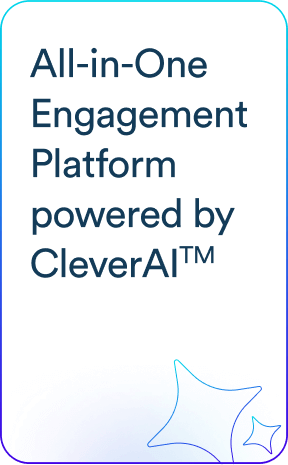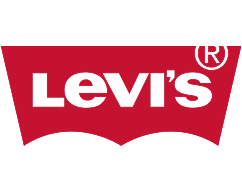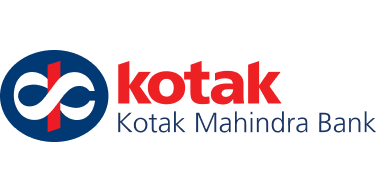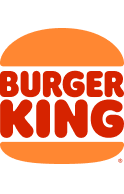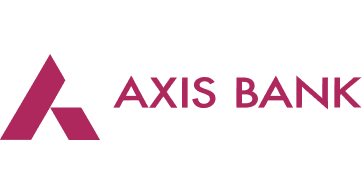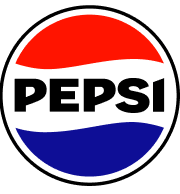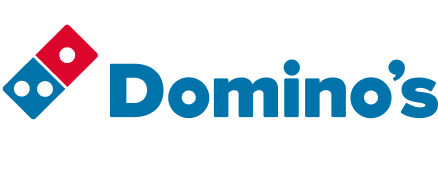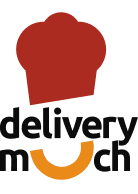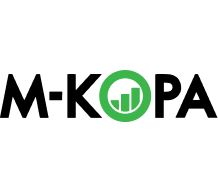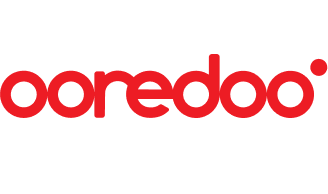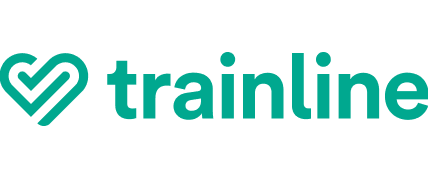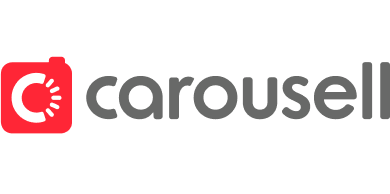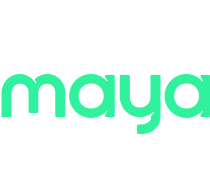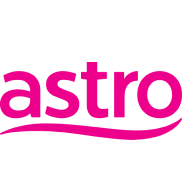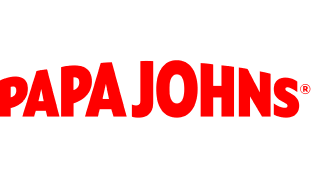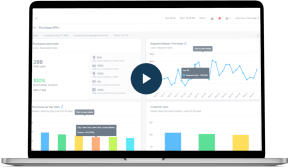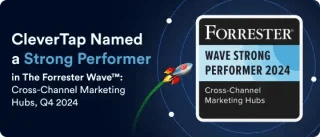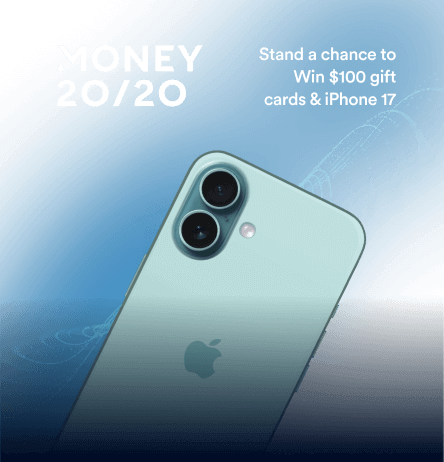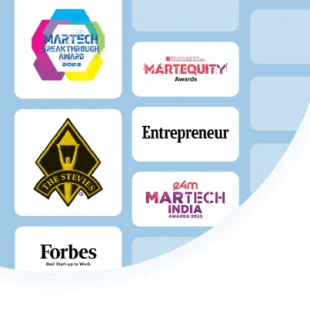E-commerce conversions are the lifeblood of online retail, turning casual visitors into paying customers. Your conversion rate reflects how well your app or website persuades visitors to take action, making it a key indicator of business success.
Global e-commerce sales are projected to exceed $6.8 trillion in 2025. This makes conversion rate optimization (CRO) a top priority for e-commerce and retail websites. This blog explores the average e-commerce conversion rates, their significance, and how to benchmark and enhance them.
What is E-Commerce Conversion Rate?
A conversion is any desired action a visitor takes on your site, most often a purchase, but it could also be a sign-up or other goal.
Common e-commerce conversions include completing a purchase (the ultimate goal for e-retail apps and websites), adding a product to the cart or wishlist, signing up for an email newsletter, or creating a user account.
E-commerce conversion rate is the percentage of app or website visitors who complete the desired action. A higher conversion rate indicates that the messaging on the app and website is effective at persuading or enabling visitors to become customers, whereas a low rate may signal issues with usability, trust, pricing, or relevance.
Average E-Commerce Conversion Rate Benchmarks
Average e-commerce conversion rates tend to hover around the low single digits. But let’s take a look at some numbers:
- Industry leaders and studies often cite a typical range of about 2.5% to 3% as the average conversion rate for e-commerce sites. That means roughly two to three out of every hundred website visitors make a purchase.
- A 2024 Shopify analysis found the average conversion rate for Shopify stores was only 1.4%, and exceeding about 3.2% puts a store in the top 20% of performers. In other words, even a conversion rate that might sound small in absolute terms can be above average in e-commerce.
- On the other hand, Amazon reportedly boasts conversion rates of around 13%. Such exceptional performance highlights how factors like brand trust, Prime memberships, and a seamless user experience can significantly enhance conversion success.
- CleverTap’s E-Commerce Benchmark Report shows that only 22% of new users purchase within their first month. This highlights the importance of re-engagement and nurturing; many shoppers need multiple touches or more time before they commit.
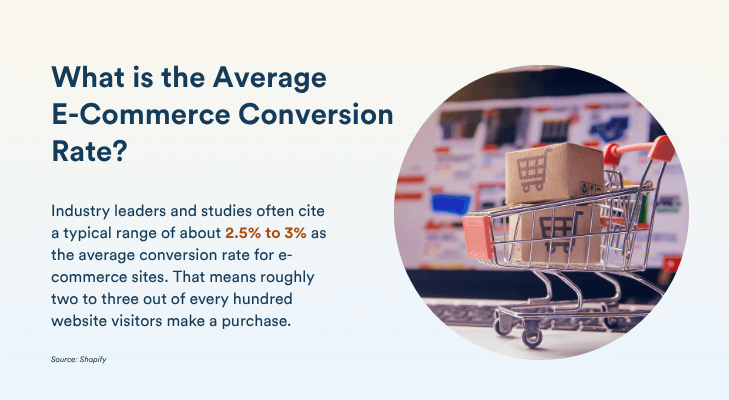
Marketers should use these conversion rate benchmarks as a starting point and continuously optimize from there. The key is to keep measuring and improving. Even if your site’s conversion rate is currently around the average, data-driven tweaks and strategies can help you inch toward top-performer territory.
Average E-Commerce Conversion Rate by Industry
E-commerce conversion rates vary across industries due to differences in consumer behavior and purchasing considerations. Below are benchmarks, influencing factors, best practices, and trust-building tips for four major sectors:
Fashion (Apparel)
Fashion e-commerce typically sees conversion rates around 2.6%, with retail apparel averaging 1.9%. Shoppers often browse extensively, comparing styles, fits, and prices, which can lead to decision paralysis. Sizing uncertainty and the inability to feel fabrics create hesitation.
- Best Practices: High-quality images, videos, detailed size guides, and virtual try-on tools help bridge the gap. Clear return policies also encourage purchases by reducing risk.
- Challenges: Fashion brands face high return rates due to fit issues, which can affect profitability. Additionally, brand loyalty in fast fashion is low, as shoppers prioritize trends and price over long-term relationships.
- Tips: Display user-generated photos, reviews, and secure payment options to reassure customers. Brands like Puma India have simplified onboarding to get shoppers engaged faster, boosting conversions.
Beauty & Personal Care
The beauty industry benefits from strong brand loyalty and replenishable products, leading to above-average conversion rates of about 3%, with personal care reaching as high as 6.8%. Consumers often trust known brands and repurchase favorite products, driving higher intent traffic.
- Best Practices: Detailed product descriptions, ingredient lists, and how-to guides help shoppers make informed choices. Beauty thrives on social proof—customer reviews, influencer testimonials, and before-and-after photos boost confidence.
- Challenges: The inability to try products before purchase leads to hesitation, particularly for items like foundation or skincare. Heavy competition also makes differentiation essential.
- Tips: Highlight cruelty-free, clean beauty certifications, and money-back guarantees to reassure shoppers. Nykaa, a top beauty retailer, prominently features customer ratings, reducing hesitation and increasing conversion rates.
Furniture & Home Décor
Home goods e-commerce, including furniture and decor, has a low conversion rate of about 2%, largely due to high product costs and shipping logistics. Customers want to see and feel items before committing.
- Best Practices: High-resolution images, 360° views, augmented reality (AR) tools, and detailed material descriptions can help customers visualize purchases. Offering fabric swatches or samples can also boost confidence.
- Challenges: Expensive and complex shipping processes lead to high cart abandonment rates (around 89%). Fear of complicated returns discourages buyers.
- Tips: Highlight hassle-free delivery, return policies, and craftsmanship guarantees. Brands that offer white-glove delivery and trial periods often see improved conversions.
Health & Wellness
The conversion rate for health and wellness e-commerce is about 2%, but well-established brands with strong trust signals can see higher rates. Consumers are highly cautious, as these products affect personal health.
- Best Practices: Transparency is key—provide scientific evidence, expert endorsements, and ingredient explanations. Interactive tools like quizzes for personalized recommendations enhance engagement.
- Challenges: Skepticism about effectiveness and safety creates barriers to conversion. Subscription-based models (e.g., vitamins) can also deter first-time buyers.
- Tips: Highlight certifications (organic, FDA-approved), verified customer testimonials, and flexible return policies. Money-back guarantees ease concerns. Making subscription models easy to modify or cancel helps reduce resistance.
Each industry comes with its own conversion benchmarks and challenges, but one thing is consistent: building trust and reducing friction are universal keys to improving conversion rates across all sectors.
Download CleverTap’s E-Commerce Benchmark Report for a detailed deep dive into the state of e-commerce marketing.
How to Calculate E-Commerce Conversion Rate
Calculating your e-commerce conversion rate is straightforward. It’s usually expressed as a percentage and can be determined with a simple formula:

Conversion Rate = (Number of Conversions / Total Visitors) × 100%
Here’s a step-by-step guide to calculate it:
- Determine the scope and time period: First, decide what constitutes a “conversion” for the calculation and the time frame you want to analyze. In e-commerce, this is often the number of sales (orders) over a given period.
- Gather the numbers: Using your analytics tools, find the number of conversions (orders placed) in the period. Then, find the total visitor count or total sessions for that period. Some marketers prefer using sessions (total visits) as the base, while others use unique visitors – just be clear on which you use.
- Apply the formula: Divide the number of conversions by the total number of visitors (or sessions), then multiply by 100 to convert to a percentage. For example, if your site had 60 orders out of 1,000 visits, the conversion rate would be (60 ÷ 1,000) × 100 = 6%. This means 6% of all visits resulted in a purchase.
- Interpret the result: Compare this percentage to your past performance and industry benchmarks. Is 6% above or below average for your sector? Over time, you want to see this number increase as you optimize your site. Also, consider segmenting conversion rate by device or channel for deeper insight (e.g., mobile vs desktop conversion rate, new visitors vs returning customers conversion rate).
A clear conversion rate calculation is fundamental because it quantifies success and allows you to track improvements as you implement new strategies.
Learn how to calculate and improve fintech conversion rate.
Factors Influencing Average E-Commerce Conversion Rate
E-commerce conversion rates fluctuate due to various factors. Understanding these influences helps marketers diagnose issues and optimize strategies. Below are key factors that impact conversion rates:
Traffic Sources
Where visitors originate significantly affects their likelihood to convert.
- High-intent traffic converts best—email marketing has an average conversion rate of 10.3%, as these users are already engaged with the brand.
- Organic search traffic converts at 2–3% as visitors may still be in research mode.
- Paid search (PPC) performs similarly, around 3-4%, attracting buyers and casual browsers.
- Social media traffic tends to have the lowest conversion rate, often close to 1%, since users are in a discovery mindset rather than shopping mode.
- Referral and direct traffic vary, but returning customers tend to convert well.
Marketers must analyze performance by channel—if organic search underperforms, landing pages may need better alignment with search intent. If social ads convert poorly, targeting or landing page messaging might need adjustment. Aligning source messaging with site content improves efficiency.
Product Pricing
Price and cost structure heavily influence conversion. High-priced or luxury items convert lower since customers take longer to decide, compare options, or save up. For example, the luxury kitchen appliance segment converts at just 0.8%.
Lower-priced, impulse-buy items convert more easily. Order value also plays a role—large cart totals can cause hesitation, leading to abandonment. Strategies like discounts, limited-time offers, and installment payment options can increase conversion rates by making products more accessible. However, hidden costs, such as high shipping fees, can negatively impact conversions. Being upfront about pricing and offering incentives, such as free shipping, can help counteract these barriers.
Purchase Type
One-time purchases have a simpler path to conversion, while subscriptions create friction due to long-term commitments. Subscription conversion rates are lower upfront, but those who do convert often have higher lifetime value. To improve subscription sign-ups, offer free trials, money-back guarantees, and clear cancellation policies. Reassuring users with easy opt-outs can increase conversions.
Additionally, offering both monthly and annual payment options caters to different buying preferences. Encouraging one-time buyers to transition into subscribers with discounts or perks can further improve conversion rates.
Other Factors
Additional elements that affect conversion include device type (mobile vs. desktop), seasonality (such as holiday sales spikes), and site performance. A slow or glitchy site can drastically reduce conversions. If app conversion rates lag behind desktop, the mobile experience may need optimization. Breaking down conversion data by these factors allows marketers to pinpoint and address inefficiencies, leading to higher performance.
Strategies to Boost E-Commerce Conversion Rate
Improving conversion rates requires a multi-faceted approach. Below are five proven strategies to optimize your e-commerce website and maximize sales.

Develop a Strong Value Proposition
Shoppers decide within seconds whether to stay on your website. A clear value proposition explains why they should buy from you. Ensure your homepage and product pages highlight your unique benefits—whether it’s quality, price, exclusivity, or convenience.
Use concise messaging and visuals. For example, if you offer free shipping or a price-match guarantee, display it prominently. A well-defined value proposition reduces confusion and increases conversions.
CleverTap enables brands to hyper-personalize messaging at scale by dynamically highlighting key differentiators—like exclusive offers or loyalty benefits—based on user behavior and preferences. This ensures your unique value proposition is communicated clearly across homepage banners, push notifications, and in-app messages.
Reduce Friction in the User Experience
Every unnecessary step in the shopping process increases the risk of cart abandonment. Site speed is crucial—a 0.1-second improvement in mobile page load time can increase conversions by 8.4%, while delays reduce conversion rates by 7% per second.
Ensure that you optimize images, minimize scripts, and utilize caching. Provide clear menus, filters, and an easily accessible “Add to Cart” button to make navigation intuitive. Checkout must offer guest checkout, reduce form fields, and accept multiple payment options to create a frictionless experience.
Using real-time behavioral analytics, CleverTap identifies friction points—such as high drop-offs in checkout or slow-loading screens—and triggers automated messages. It also supports cart recovery journeys with deep linking and personalized content to smoothen re-entry and conversion.
Build Trust with Customers
Trust is essential, especially for first-time buyers. Social proof—reviews, ratings, and testimonials—helps reduce hesitation. A 4.8/5-star rating with hundreds of reviews reassures shoppers, while customer photos add credibility. Secure checkout badges, clear pricing, and hassle-free returns build trust and prevent drop-offs. Visible customer support options like live chat further boost confidence.
Optimize for Mobile Devices
With 60% of e-commerce traffic coming from mobile, optimizing for smartphones is critical. Yet, mobile conversion rates lag behind desktop (1.5% vs. 3%).
A mobile-first design keeps your site fast, easy to navigate, and user-friendly. Use clear text, large buttons, and simplified content to enhance the experience. Avoid intrusive pop-ups, and ensure carts sync across devices to prevent drop-offs. Offering one-tap payments like Apple Pay or Google Pay reduces friction, helping you capture more conversions and recover lost sales.
Utilize Data Analytics for Continuous Improvement
Conversion rate optimization is an ongoing process. Marketers should track conversion rate metrics like bounce rates, cart abandonment rates, and drop-off points. A/B testing different headlines, layouts, and checkout flows helps identify which elements resonate best.
- If customers abandon their carts, unexpected fees might be the issue.
- If bounce rates are high, product pages might need clearer descriptions or better images.
Customer feedback, surveys, and industry benchmarks provide further insights that can be used to conduct data-driven personalization—like targeted recommendations—to boost engagement and conversions.
CleverTap provides granular insights into user behavior, segment performance, and drop-off points, enabling data-driven experimentation. It’s A/B testing, predictive segmentation, and funnel analytics that empower teams to iterate and refine campaigns, continuously boosting conversions over time.
See how CleverTap can help you boost your e-commerce conversions and increase customer lifetime value.
Real-World Examples of Brands Improving Their Average E-Commerce Conversion Rate
Here are five real-world examples of e-commerce and retail brands that improved their conversion rates through specific strategies:
1. AJIO: Utilizing Customer Data and Optimizing for Mobile with CleverTap
AJIO, one of India’s leading online fashion retailers, faced growing challenges in delivering personalized engagement at scale across its catalog of 6,000+ brands and 1.7 million styles. Traditional campaign methods were time-consuming and often lacked relevance and speed.
To address this, AJIO partnered with CleverTap to automate and modernize its customer engagement strategy. By leveraging CleverTap’s Journeys feature and rich behavioral data, AJIO built detailed user profiles and segmented audiences with precision. This enabled highly targeted communication across push notifications, SMS, in-app messages, and emails, tailored to each user’s actions and customer lifecycle stage.
Pre-built templates and dynamic content allowed rapid deployment, helping AJIO scale personalization while improving campaign speed and effectiveness.

Results:
- 4X increase in conversions through personalized and behavior-driven engagement.
- 41% month-over-month growth in customer retention, reflecting improved user satisfaction and loyalty.
- 28% rise in reactivated users, driven by timely and contextual re-engagement efforts.
Read the full case study here.
2. A Leading UAE Fashion Retailer: Using Personalized Engagement with CleverTap
A leading UAE online fashion retailer struggled with poor engagement due to generic messaging, limited segmentation, and low push notification delivery, especially on certain devices. Lack of behavioral data made it hard to personalize campaigns or recover abandoned carts and wishlists, resulting in missed revenue opportunities and underwhelming conversion rates.
The brand partnered with CleverTap to implement real-time, personalized engagement. They used automated journeys for cart, wishlist, and browse abandonment, delivering deep-linked, dynamic notifications with product details. CleverTap’s RFM segmentation also enabled smarter targeting of high-value and at-risk users, significantly improving the relevance and timing of outreach.

Results:
- 4× increase in conversions
- 300% YoY revenue growth
- 228% jump in YoY conversions
- 68% increase in in-app traffic
Read the full case study here.
3. Puma India: Reducing Friction During Onboarding
Puma is a globally recognized sports apparel brand, and its India division (Puma India) drives substantial online revenue. Puma India focused on simplifying its user onboarding and account registration process to reduce friction for new visitors. They let users start shopping almost immediately without hurdles by implementing a quick, hassle-free sign-up.
This enabled users to dive into the shopping experience faster, boosting engagement and driving quicker conversions. Puma identified that forcing too much information or steps upfront was costing them sales – by removing that barrier, they saw more new visitors convert to purchasers.
4. Nykaa: Building Trust With Social Proof
Nykaa is a leading beauty and wellness e-commerce platform in India, catering to over 25 million customers. One challenge in beauty retail is convincing new shoppers to trust product quality and suitability, especially when they can’t try items in person.
Nykaa tackled this by integrating robust customer ratings and reviews on product pages. By visibly displaying what other buyers thought of a product, Nykaa provided social proof and helped new customers overcome hesitation.
This approach reduced doubt and built trust and credibility for first-time shoppers, empowering them to make informed decisions. The result was higher conversion rates, as more visitors felt confident enough to purchase after seeing positive reviews.
5. Prose: Personalizing The User Experience
Prose is a custom hair care brand that uses personalization to convert customers. Prose attracted users with an easy online quiz that creates a personalized hair profile. This quiz experience is part of the sign-up and product recommendation process. Upon completing it, users get custom-formulated product suggestions tailored to their hair needs.
Prose also offers incentives to subscribers, such as discounts, free products, exclusive content, and early access to new launches. This highly personalized and value-packed approach significantly boosts customer engagement and conversion rates.
Each of these examples showcases a different tactic for improving conversion, but all share a common thread: a deep understanding of their customer journey and pain points, and a strategic solution to address them.
Turn Insights into Action for Higher E-Commerce Conversions
Conversion rate optimization best practices dictate a customer-focused and data-driven approach. The key takeaway here is that marketers must continuously measure, test, and refine their approach. Even small improvements in conversion rates can lead to significant revenue gains.
Applying these strategies will create a more efficient, user-friendly, and high-performing online store, ensuring long-term growth and profitability.
Agnishwar Banerjee 
Leads content and digital marketing.Expert in SaaS sales, marketing and GTM strategies.
Free Customer Engagement Guides
Join our newsletter for actionable tips and proven strategies to grow your business and engage your customers.

